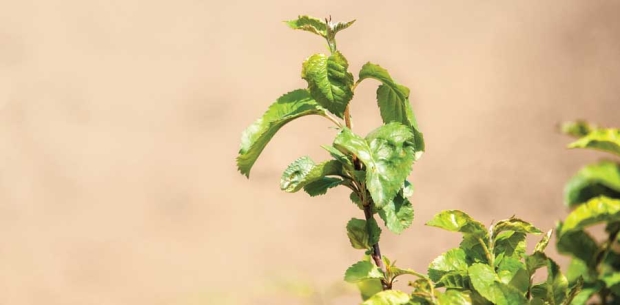
(TJ Mullinax/Good Fruit Grower photo illustration)
The right rootstock is really the root of a grower’s success, and growers can achieve far greater success if they avoid a few common mistakes.
Here are three common mistakes to avoid when selecting rootstock:
1. Failing to plan early
Everyone wants to be first in line, but there’s a waiting list for many of the newer rootstock cultivars. Planning early makes it more likely growers will get what they want — and need — when they want it.
Planning should include setting expectations for the orchard. If getting the trees grown and ready to produce is your No. 1 priority, then you want to go with rootstocks that have more horsepower.
At the same time, growers need to determine how they want to manage their orchard, including trellis type, whether they will be installing shade cloth or netting and how they plan to irrigate.
Early planning can save money and aggravation later.
2. Lack of knowledge about soil
Some folks roll their eyes when you tell them to look at their soil, but soil types in an orchard can change dramatically in just a few feet, changing irrigation needs and potentially affecting rootstock choices.
With additional planning, growers can do a better job of managing rootstock selection and water application technologies to build an easier-to-manage orchard than growers have been satisfied with in the past.
For instance, the biggest challenge with drip irrigation is matching the length of the set with the soil type, but many growers don’t realize where they have sand and where they have clay.
In a 600-foot row, I plan to plant three different rootstocks just because the soil texture changes so much. We have good dirt, bad dirt and OK dirt in the same row, but by reading the trees that are there currently, I can tell my needs in each spot.
3. “When your only tool is a hammer, everything looks like a nail”
Too often, growers just know they want to plant a row of trees. They buy one variety of rootstock from one nursery, and that’s it.
Soil type isn’t the only reason to choose different cultivars. Growers should be buying different cultivars from two or three nurseries to better manage risk as well.
They also should be in regular contact with those nurseries to ensure they’re not going to end up with the rootstock that’s left over because no one else wants it, either because the scion genetics or the rootstock genetics have advanced or the trellis system of choice has changed.
We’re all looking for this nirvana, and there isn’t one solution, with one rootstock for all varieties.
– by Tom Auvil, a research horticulturist for the Washington Tree Fruit Research Commission. •






Dear Sir/Madam
I live in Lower Hutt, Wellington. Whereabouts would be the best place to buy rootstock for grafting a lemon tree, or other fruit trees?
Regards
Ruth Willard